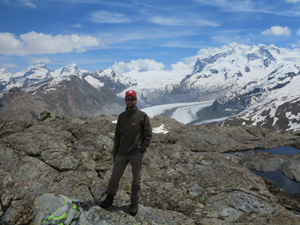Fluid escape from subduction zones controlled by channel-forming reactive porosity
- Nature Geoscience , DOI: 10.1038/NGEO2865
Abstract
Water within the oceanic lithosphere is returned to Earth's surface at subduction zones. Observations of metamorphosed veins preserved in exhumed slabs suggest that fluid can escape via channel networks. Yet, it is unclear how such channels form that allow chemically bound water to escape the subducting slab as the high pressures during subduction reduce the porosity of rocks to nearly zero. Here we use multiscale rock analysis combined with thermodynamic modelling to show that fluid flow initiation in dehydrating serpentinites is controlled by intrinsic chemical heterogeneities, localizing dehydration reactions at specific microsites. Porosity generation is directly linked to the dehydration reactions and resultant fluid pressure variations force the reactive fluid release to organize into vein networks across a wide range of spatial scales (μm to m). This fluid channelization results in large-scale fluid escape with sufficient fluxes to drain subducting plates. Moreover, our findings suggest that antigorite dehydration reactions do not cause instantaneous rock embrittlement, often presumed as the trigger of intermediate-depth subduction zone seismicity
